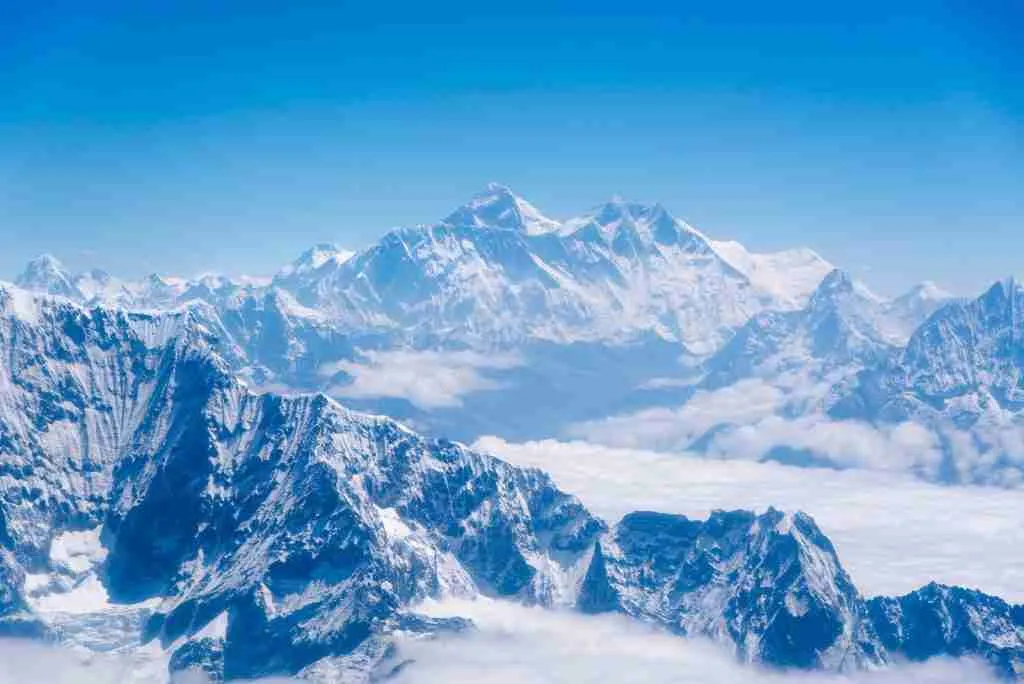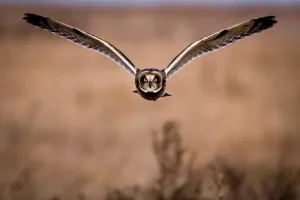23 Fun Facts About Mount Everest That Will Amaze You
-
Mount Everest is home to the deadliest mountain in the world.
-
Over 300 bodies remain on Everest due to harsh conditions.
-
April to May is the climbing season on Everest.
-
Strong winds can reach 200 mph at the summit.
-
Avalanches are the leading cause of death for climbers.
-
Temperatures can drop to -76°F with wind chill.
-
Base Camp is located at 17,598 feet.
-
Sherpas, Nepalese locals, are skilled climbers.
-
Expensive gear and permits needed for the climb.
-
A gallon of water weighs 8.34 pounds at high altitude.
-
Altitude sickness can cause hallucinations.
-
Sherpas can carry up to 80 pounds of gear.
-
Over 700 summits have been recorded on Everest.
-
From the top, five of the world’s 14 highest peaks can be seen.
-
Climbing Everest is a once-in-a-lifetime experience for many.
Table of Contents
1. Mount Everest is the highest peak, soaring 8,849 m above sea level.
Mount Everest towers above all others, reaching for the skies at an impressive 8,849 m (29,035ft). With its majestic stature, it’s no wonder it’s considered the king of mountains, towering over the world like a glistening, snow-capped behemoth.
It’s a beacon of adventure, a symbol of human determination, and a testament to the power of nature.
2. Mount Everest was Named after Sir George Everest, surveyor-general of India.
Naming a mountain after someone is a pretty big deal, but when that mountain is the highest peak on Earth, it’s a whole new level of accolade.
That’s why the mighty Mount Everest bears the name of Sir George Everest, the surveyor-general of India. It’s a testament to his unwavering spirit of adventure and his pioneering work mapping the treacherous peaks of the Himalayas.
3. The first summit was reached by Sir Edmund Hillary and Tenzing Norgay in 1953.
In 1953, history was made when two brave souls, Sir Edmund Hillary and Tenzing Norgay, reached the world’s top. With their unyielding spirit and unrelenting determination, they conquered the mighty Mount Everest and made their mark on the world.
It was a moment that proved that anything is possible and that the human spirit can conquer even the most daunting challenges. So let’s raise a glass to Sir Edmund and Tenzing, two legends who showed us what it truly means to be a conqueror.
4. Mount Everest grows approximately 4 millimeters yearly due to geological uplift.
Mount Everest grows approximately 4 millimeters every year due to geological uplift. Mount Everest’s height increases by about 4 millimeters annually because of tectonic activity.
The Indian Plate is pushing against the Eurasian Plate, causing the Himalayas to rise. This ongoing geological process continuously changes the mountain’s elevation. Despite this growth, natural erosion and climate factors also affect its overall height over time.
5. The fastest ascent to the summit was completed in 8 hours and 10 minutes by Pemba Dorje Sherpa.
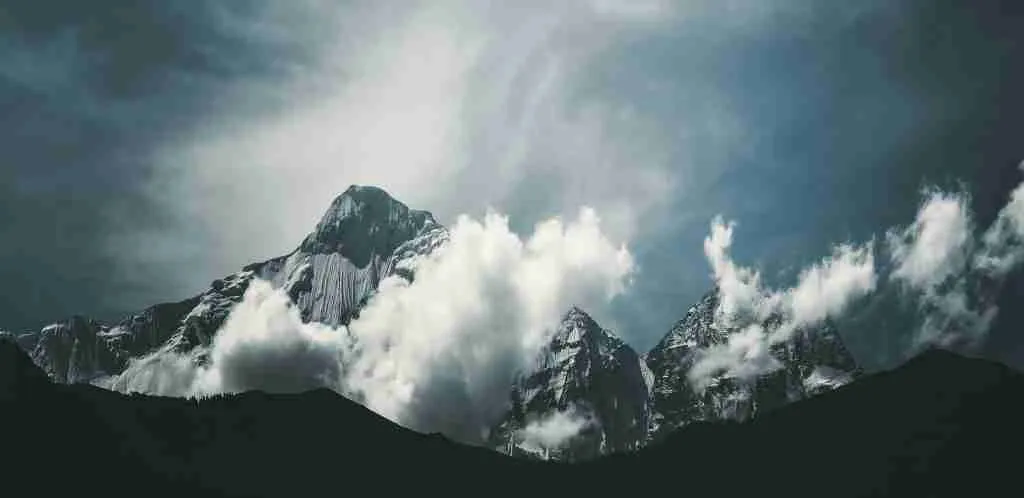
READ ALSO: 23 Interesting Facts About Mount Fuji That You Don’t Want to Miss
Pemba Dorje Sherpa just proved that when it comes to climbing Everest, speed is of the essence. He blitzed up the mountain faster than you can say ‘29,032 feet’, completing the ascent in a mere 8 hours and 10 minutes.
Talk about leaving the competition in the dust.
6. The first American to summit Everest was James Whittaker in 1963.
James Whittaker made history as the first American to conquer the mighty Everest.
He not only scaled the highest peak on earth but also placed the stars and stripes at their pinnacle, making all Americans proud in 1963.
7. To prepare for climbing at high altitudes, many climbers acclimate to the nearby city of Kathmandu.
Kathmandu is where the climbing dreams go to acclimate before taking on the challenge of Everest. It’s like a high-altitude boot camp, where aspiring summiteers get their bodies ready to tackle the tallest peak in the world.
It’s a rite of passage before the real climb begins.
8. The temperature on the summit of Everest can drop to minus 76 degrees Fahrenheit.
Everest is the kind of place that’ll freeze you solid faster than a Disney villain.
The summit temperatures can plummet to a staggering minus 76 degrees Fahrenheit, which makes one question why anyone would even attempt to scale the peak in the first place.
But then again, where’s the fun in doing what’s easy?
9. The mountain is known as “Chomolungma” in Tibetan, meaning Goddess Mother of the World.
Mount Everest is known as “Chomolungma” in Tibetan, which translates to “Goddess Mother of the World.” This name reflects the cultural and spiritual significance of the mountain to the local people.
The title honors the mountain as a sacred entity and a powerful deity in Tibetan Buddhism. This traditional name has been used for centuries, long before the mountain was named Everest by Western explorers.
10. The North Face of Everest is in Tibet, while the South Face is in Nepal.
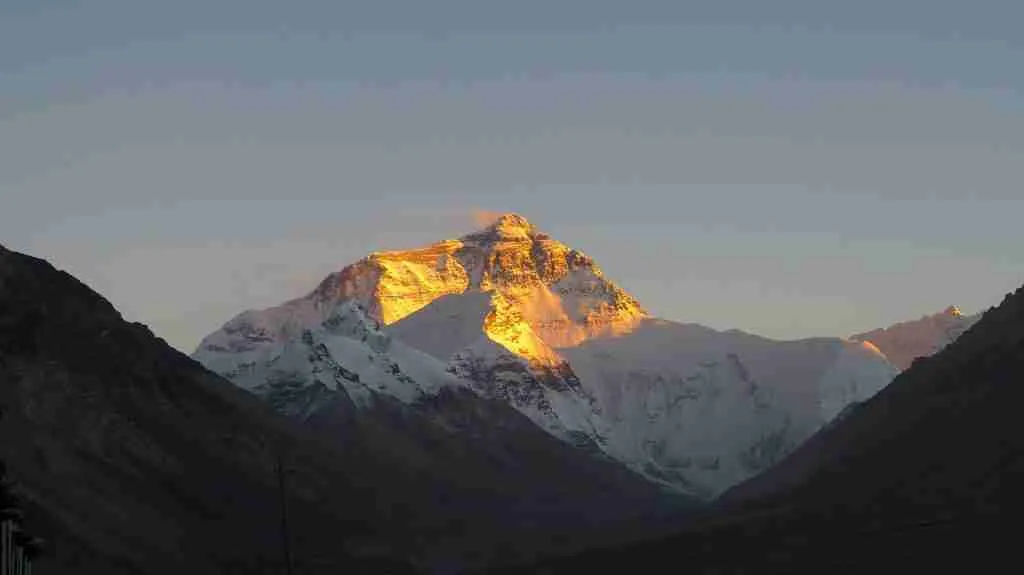
READ ALSO: 26 Fun Facts About Alps | From Glaciers to Edelweiss
Everest has a split personality, with two sides to its story. The North Face lives in Tibet, while the South Face calls Nepal home. Both sides offer their own unique challenges and breathtaking views.
It’s like a yin and yang of climbing, both beautiful and dangerous in their own way.
11. The summit of Everest is located on the border of Nepal and Tibet.
The summit of Everest sits on the border of Nepal and Tibet, like a king on a throne surveying his kingdom. It’s the meeting point of two countries, and the top of the world.
It’s the ultimate checkpoint for climbers, who have to cross not just geographical, but also political boundaries, to reach the peak.
12. The first winter ascent of Everest was in 1980 by a Polish team.
The Polish team pulled off a winter wonder in 1980 when they made the first-ever winter ascent of Everest.
It was a cold, harsh, and white-knuckled climb, but they braved the elements and reached the summit, cementing their place in mountaineering history.
They showed that when it comes to climbing Everest, the winter is just another season to conquer.
13. The average cost for a single person to climb Everest is around $45,000.
Climbing Everest is not for the faint of the wallet. It’ll cost you between $30,000 to $160,000 to reach the top. It’s a pricey adventure, but some say it’s worth every penny to stand on top of the world.
Plus, think of all the bragging rights that come with it.
14. Sherpas, an ethnic group native to the Himalayas, are often hired as guides for climbing expeditions.
Sherpas are the secret weapon of every successful climbing expedition on Everest. They’re an ethnic group native to the Himalayas, and they know these mountains like the back of their hand.
They’re the ultimate guides, leading climbers up the peak with ease, and their expertise is worth every penny. Hiring a Sherpa is like having a cheat code for conquering Everest.
15. Everest has two main climbing routes: the Southeast Ridge and the Northeast Ridge.
READ ALSO: 20 Interesting Facts About Mount Elbrus | You Won’t Believe
Everest has two main climbing routes, and it’s like choosing between the highway and the scenic route.
The Southeast Ridge is the most popular and well-trodden path, while the Northeast Ridge is a bit more adventurous and less traveled.
Both routes will take you to the top, but each offers a different experience and set of challenges.
16. Reinhold Messner and Peter Habeler 1978 achieved the first successful summit without supplemental oxygen.
Reinhold Messner and Peter Habeler took a deep breath and made history in 1978 when they summited Everest without supplemental oxygen.
It was a lung-busting, high-altitude feat, that pushed the limits of what was thought to be possible. They climbed to new heights and proved that with determination and skill, anything is possible at the world’s tallest peak.
17. The age range for climbers on Everest ranges from a 16-year-old to an 85-year-old.
Everest doesn’t discriminate based on age! Climbers range from spry 16-year-olds to seasoned 85-year-olds. It’s a true test of endurance, and whether you’re just starting out or a seasoned pro, the mountain doesn’t discriminate.
The peak is open to all, and climbers of all ages have taken on the challenge and reached the top.
18. The first 3G internet service on Everest was launched in 2010.
The first 3G internet service on Mount Everest was launched in 2010. This milestone allowed climbers to access the internet and communicate in real-time from the world’s highest peak.
The service was provided by Ncell, a Nepalese telecom company, significantly improving connectivity for expeditions. This technological advancement made it possible for climbers to share their experiences instantly via social media.
19. The oldest person to summit Everest was Yuichiro Miura, an 80-year-old Japanese climber, in 2013.
Yuichiro Miura, a Japanese climber, etched his name in mountaineering history when, at the age of 80, he became the oldest person to summit Mount Everest.
This remarkable feat took place in 2013, adding another chapter to his adventurous life. Miura had previously climbed Everest twice before, in 2003 and 2008, showcasing his enduring passion for exploration and mountaineering challenges.
20. Mount Everest is made of marine limestone that once formed the floor of the ancient Tethys Sea.
Mount Everest is composed of marine limestone that once formed the floor of the ancient Tethys Sea. This geological composition reveals that the region was submerged under a vast ocean millions of years ago.
The Indian Plate’s collision with the Eurasian Plate uplifted these oceanic rocks to form the Himalayas. Fossils of marine life found on Everest’s slopes provide evidence of this ancient seabed.
21. Babu Chiri Sherpa spent 21 hours on the summit without supplemental oxygen in 1999.
Babu Chiri Sherpa spent an incredible 21 hours on the summit of Mount Everest without supplemental oxygen in 1999. He reached the summit on May 6, 1999, and astonishingly stayed overnight at the top of the world.
This remarkable feat showcased his extraordinary endurance and acclimatization to high altitudes. Spending such an extended period on the summit without additional oxygen is a rare and dangerous achievement.
22. In 2004, a French climber, Didier Delsalle, landed a helicopter on the summit.
On May 14, 2005, French climber Didier Delsalle made history by landing a helicopter on the summit of Mount Everest. His Eurocopter AS350 Squirrel touched down at 8,848 meters (29,029 feet), setting a world record for the highest altitude landing. The landing was meticulously documented to validate this achievement.
Delsalle stayed on the summit for 3 minutes and 50 seconds before returning to Tenzing-Hillary Airport in Lukla, Nepal. This remarkable feat required extensive testing due to the challenging conditions, including low atmospheric pressure and high winds. Delsalle even repeated the landing the following day to prove it wasn’t a fluke.
23. The first woman to reach the summit of Everest was Junko Tabei of Japan in 1975.
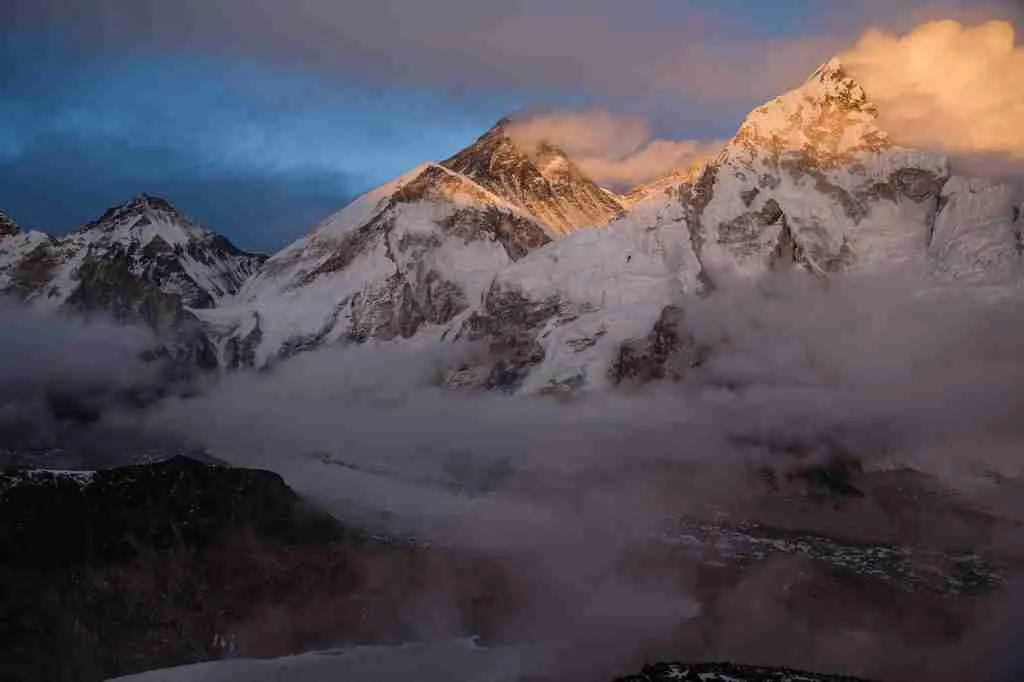
READ ALSO: 22 Fun Facts About Mountains You Have to Read to Believe
Junko Tabei made history in 1975 as the first woman to reach the top of Everest. She shattered the glass ceiling and paved the way for female climbers everywhere, proving that determination and grit know no gender.
Junko reached new heights, both literally and figuratively, with her summit of the world’s tallest peak.
FAQS
Climbing Mount Everest typically takes about two months. The journey begins with a trek to base camp, which takes around 10 days. Climbers then spend several weeks acclimatizing to the altitude with a series of rotations between higher camps and base camp. The final push to the summit usually takes about a week, including the ascent and descent, but this can vary depending on weather conditions and individual climber’s pace.
As of 2023, over 6,000 individuals have successfully summited Mount Everest. This includes multiple ascents by some climbers, resulting in more than 10,000 total ascents. The number of climbers has steadily increased over the years due to advancements in gear, guided expeditions, and better logistical support. Despite the growing number, Everest remains a challenging and dangerous climb with strict regulations to manage the number of climbers each season.
The original name of Mount Everest is u0022Chomolungmau0022 in Tibetan, which translates to u0022Goddess Mother of the World.u0022 This name reflects the mountain’s spiritual and cultural significance to the local communities in Tibet. In Nepal, the mountain is also known as u0022Sagarmatha,u0022 meaning u0022Forehead in the Sky.u0022 These traditional names have been used for centuries before the mountain was named Everest by Western explorers.
Climbing Mount Everest is extremely difficult and requires significant physical and mental preparation. The challenges include high altitude, which can cause altitude sickness, and extreme weather conditions with temperatures dropping to -60°C (-76°F). The climb involves navigating dangerous terrain such as the Khumbu Icefall and the Lhotse Face. Additionally, the u0022Death Zoneu0022 above 8,000 meters (26,247 feet) poses severe risks due to low oxygen levels. Successful summiting requires acclimatization, technical climbing skills, and endurance.
There are typically four main camps on the South Col route of Mount Everest, plus Base Camp. These are:u003cbru003eu003cbru003eu003cstrongu003e1.u003c/strongu003e u003cstrongu003eBase Camp (5,364 meters / 17,598 feet):u003c/strongu003e Starting point for climbers.u003cbru003eu003cstrongu003e2. Camp I (6,065 meters / 19,900 feet):u003c/strongu003e Located at the top of the Khumbu Icefall.u003cbru003eu003cstrongu003e3. Camp II (6,400 meters / 21,000 feet):u003c/strongu003e Positioned at the Western Cwm.u003cbru003eu003cstrongu003e4. Camp III (7,200 meters / 23,625 feet):u003c/strongu003e Situated on the Lhotse Face.u003cbru003eu003cstrongu003e5. Camp IV (7,920 meters / 25,980 feet):u003c/strongu003e Known as the South Col, the final camp before the summit push.

